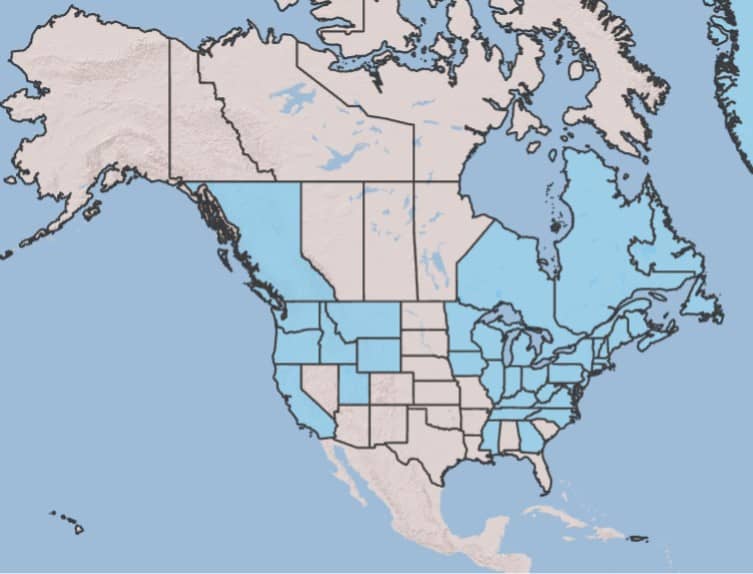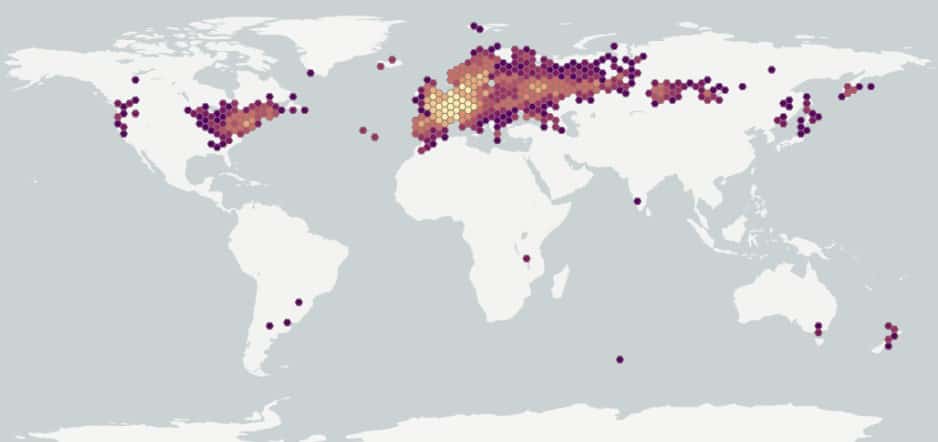Galium mollugo
Overview
Aperçu
Regulation :
Remarques Réglementation:
- CFIA Weed Seeds Order - Class 3: Secondary Noxious Weed Seeds
Regulation Notes:
Included under Galium spp. on the USA Federal Noxious Weed Seed List
Distribution :
Répartition :
Galium mollugo is native to northern Africa, Europe and western parts of temperate Asia, and introduced to North America (USDA-ARS 2022). In the United States, it is present in northwestern and northeastern states as far south as California and Georgia (Mersereau and DiTommaso 2003; USDA-NRCS 2022). In Canada, the species occurs in Alberta, British Columbia, New Brunswick, Newfoundland, Nova Scotia, Ontario, Prince Edward Island and Quebec (Mersereau and DiTomasso 2003; Brouillet et al. 2010+).
Habitat and Crop Association :
Habitat et Cultures Associées :
Found primarily in pastures, natural meadows, old fields, forest edges, river flats, roadsides and waste places, thriving in nutrient and calcium-rich soils (Mersereau and DiTommaso 2003). This species has been found growing in fields of Lotus corniculatus (bird’s-foot trefoil), Phleum pratense (timothy), Dactylis glomerata (orchard grass), Trifolium pratense (red clover) and Melilotus officinalis (yellow sweet-clover) in the United States and Canada (Mersereau and DiTommaso 2003).
Economic Use, cultivation area, and Weed Association :
Utilisation économique, zone de culture et association de mauvaises herbes :
Duration of Life Cycle :
Durée du cycle vital:
Perennial
Dispersal Unit Type :
Type d’unité de dispersion :
Schizocarp, divided into 2 mericarps
General Information
RENSEIGNEMENTS GÉNÉRAUX
Galium mollugo was introduced into North America primarily as an ornamental plant, but was also observed to infest fields from contaminated seed, especially Lotus corniculatus (bird’s-foot trefoil) (Mersereau and DiTommaso 2003). Mericarps are dispersed by birds, water and contaminated crop seed (Mersereau and DiTommaso 2003). Over 2000 mericarps were counted from a single stem of G. mollugo, and plants can spread up to a meter diameter and sprout from underground stems (Mersereau and DiTommaso 2003).
Hybrids produced with the similar Galium verum have intermediate features and have been recorded in Europe where the ranges of both species overlap (Mersereau and DiTommaso 2003).
.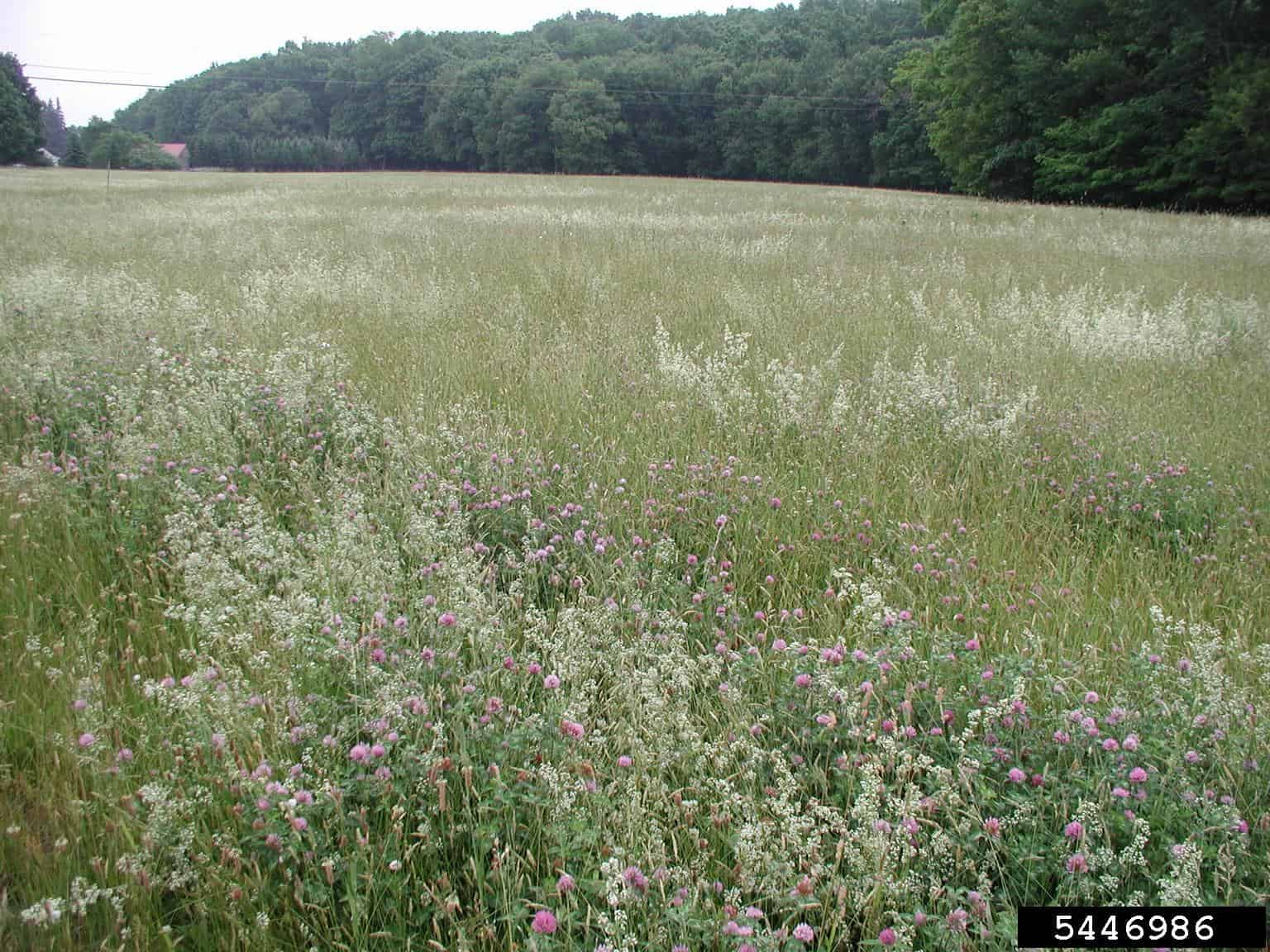
Galium mollugo infestation (Leslie J. Mehrhoff, University of Connecticut, Bugwood.org)
Identification
Identification
-
Mericarp
Size
- Mericarp length*: 1.0 – 2.0 mm; width: 0.9 – 1.5 mm
*Note: minimum and maximum of 20 mericarps in a normal range of this species using image measurement (ISMA 2020)
Shape
- Mericarp shape is variable, generally kidney-shaped, can be D-shaped or globose with a longitudinal groove on one side
- Mericarps are curved on the longitudinal axis
Surface Texture
- Mericarp surface is wrinkled, irregular ridged, and may also be bubbled, but is not hairy
Colour
- Mericarp colour is variable, shiny medium or dark yellowish-brown
- Short, white crystals (raphides) can be seen beneath the surface of some mericarps
Other Features
Hilum
- The hilum is within a long groove on one side of the mericarp
Other than hilum
- Mericarp layer is generally difficult to remove from the seed, and would likely stay intact after processing
- Each mericarp contains one seed and two mericarps are joined form the schizocarp
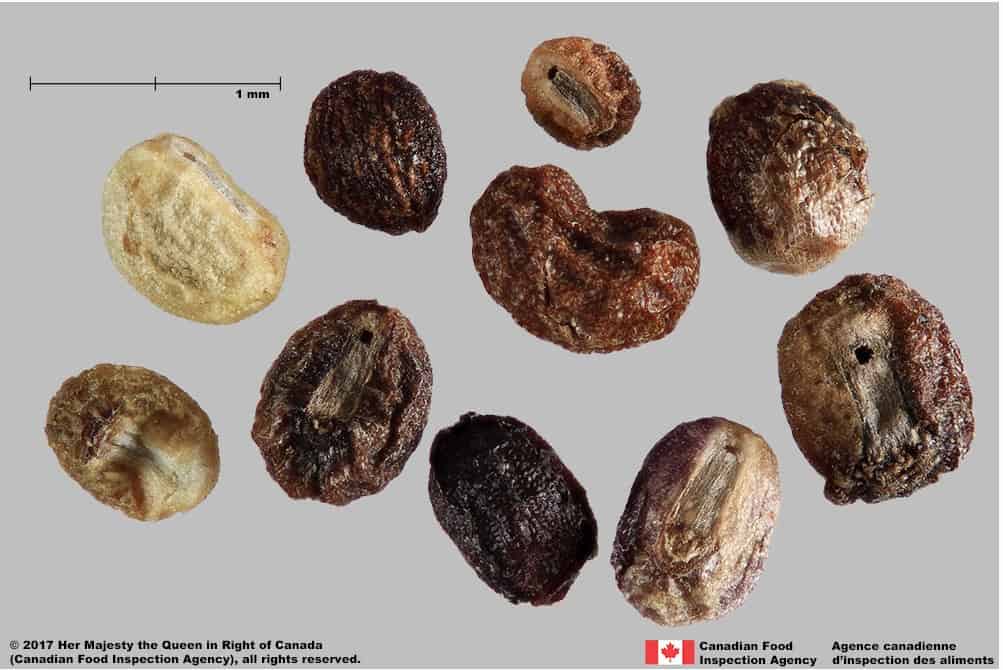
False baby’s breath (Galium mollugo) fruits

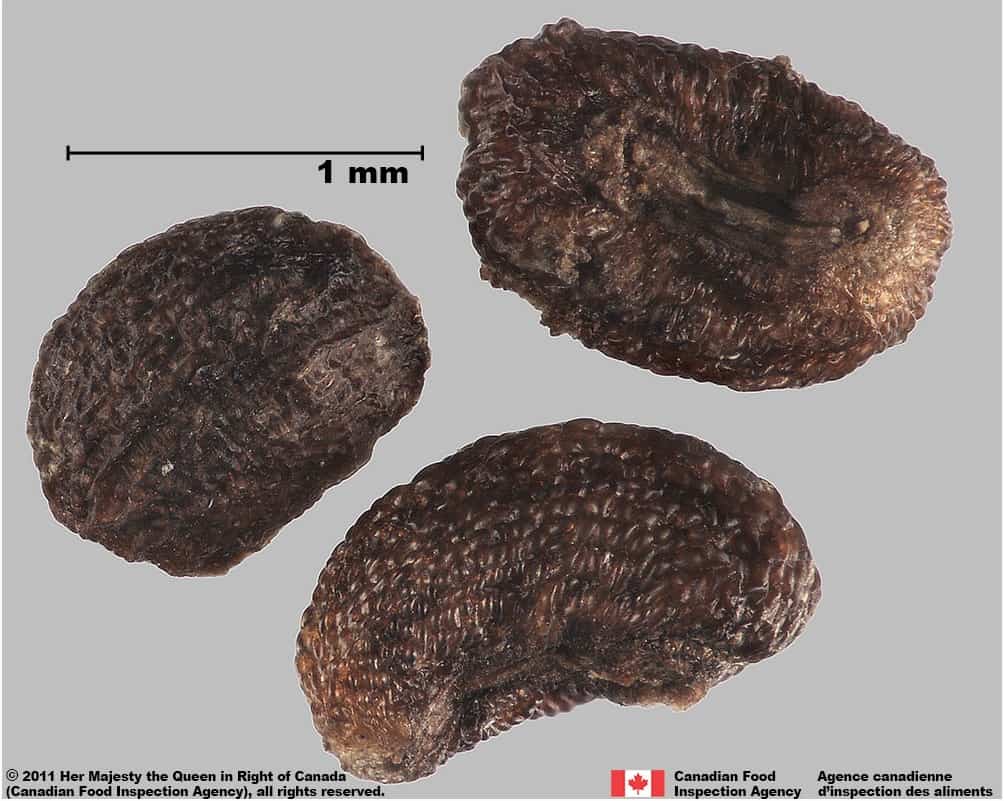
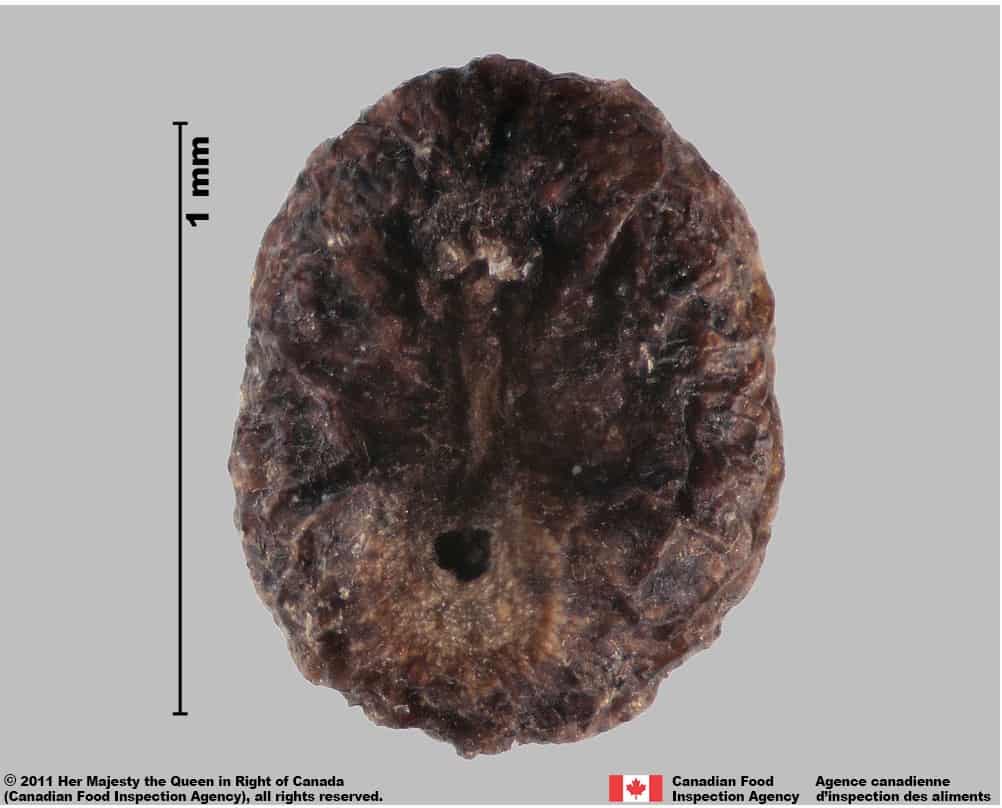
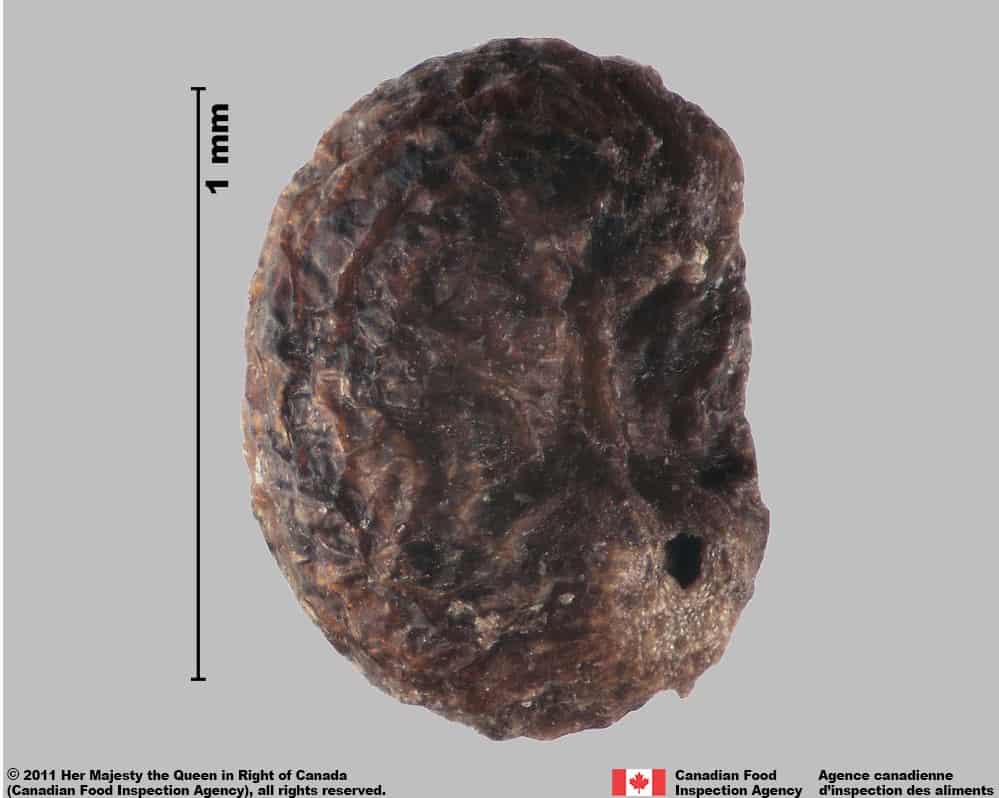
-
Seed
Size
- Seed length: 1.0 – 1.6 mm; width: 0.8 – 1.0 mm (Khalik et al. 2008)
Shape
- Seed generally kidney shaped or D-shaped with an oval-shaped hole on one side
Surface Texture
- Seed surface slightly wrinkled
Colour
- Seed translucent reddish brown
Other Features
Hilum and Hilum area
- The hilum is within the hole on one side of the seed
Other Features
- Surface of seed with crystals (raphides) that appear as short white streaks
-
Embryo
Size
- Embryo size is rudimentary
Shape
- Embryo is spatulate shaped (Martin 1946)
Endosperm
- Endosperm is hard
Other Features
- Embryo is in a peripheral position, along the side of the seed opposite the hole
Identification Tips
CONSEILS POUR L’IDENTIFICATION
Species of Galium have similar looking fruits: generally globose with a large hole on one side of the fruit. The fruits often have a bristly surface, but some are smooth or tuberculate, and can be variable within a species. Fruits of different species can be distinguished by their size, surface texture and shape of the hole on one side of the fruit.
The fruits of Galium mollugo are medium sized, generally longer than wide, curved longitudinally with a wrinkled surface. The hilum area is generally covered by mericarp tissue and appears as a groove rather than a hole. The fruits look similar to other medium-sized species with a wrinkled surface and curved shape like G. boreale and G. verum. They can be distinguished from similar species by the curved shape, lack of hairs, reddish-brown seeds and thick fruit wall that obscures the hole at the hilum area.

False baby’s breath (Galium mollugo) fruits




Additional Botany Information
AUTRES RENSEIGNEMENTS BOTANIQUES
Flowers/Inflorescence
- Flowers are 2 – 5 mm in diameter and comprised of four white to greenish-white petals (Mersereau and DiTommaso 2003)
Vegetative Features
- Stem is angular with four or five ribs (Mersereau and DiTommaso 2003)
- Leaves are arranged in whorls of five to twelve (Mersereau and DiTommaso 2003)
- Woody rhizomes are yellow to orange and spread horizontally producing new plants at nodes (Mersereau and DiTommaso 2003)
- Roots are reddish-orange (Mersereau and DiTommaso 2003)
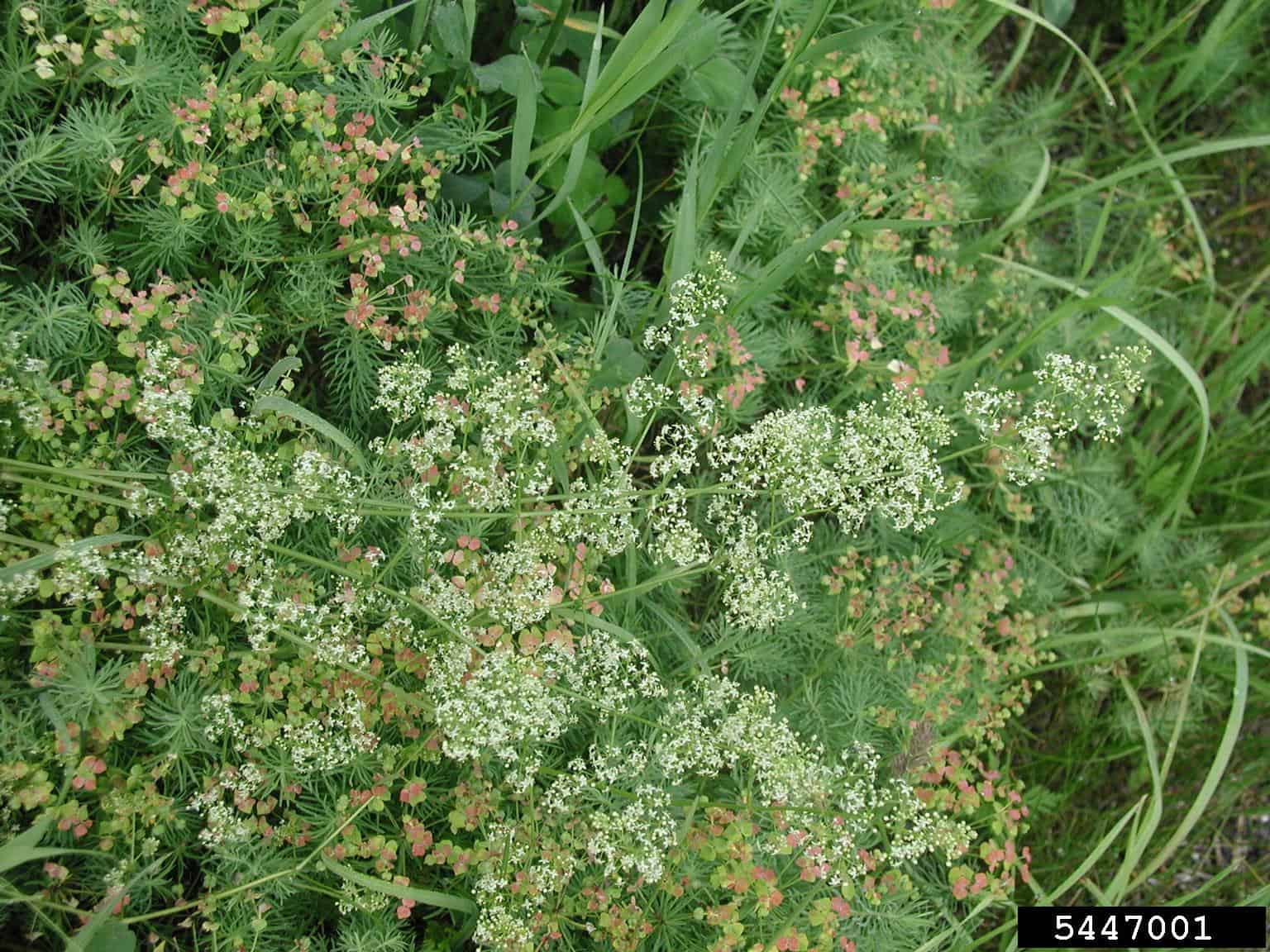
Galium mollugo flowers (Leslie J. Mehrhoff, University of Connecticut, Bugwood.org)

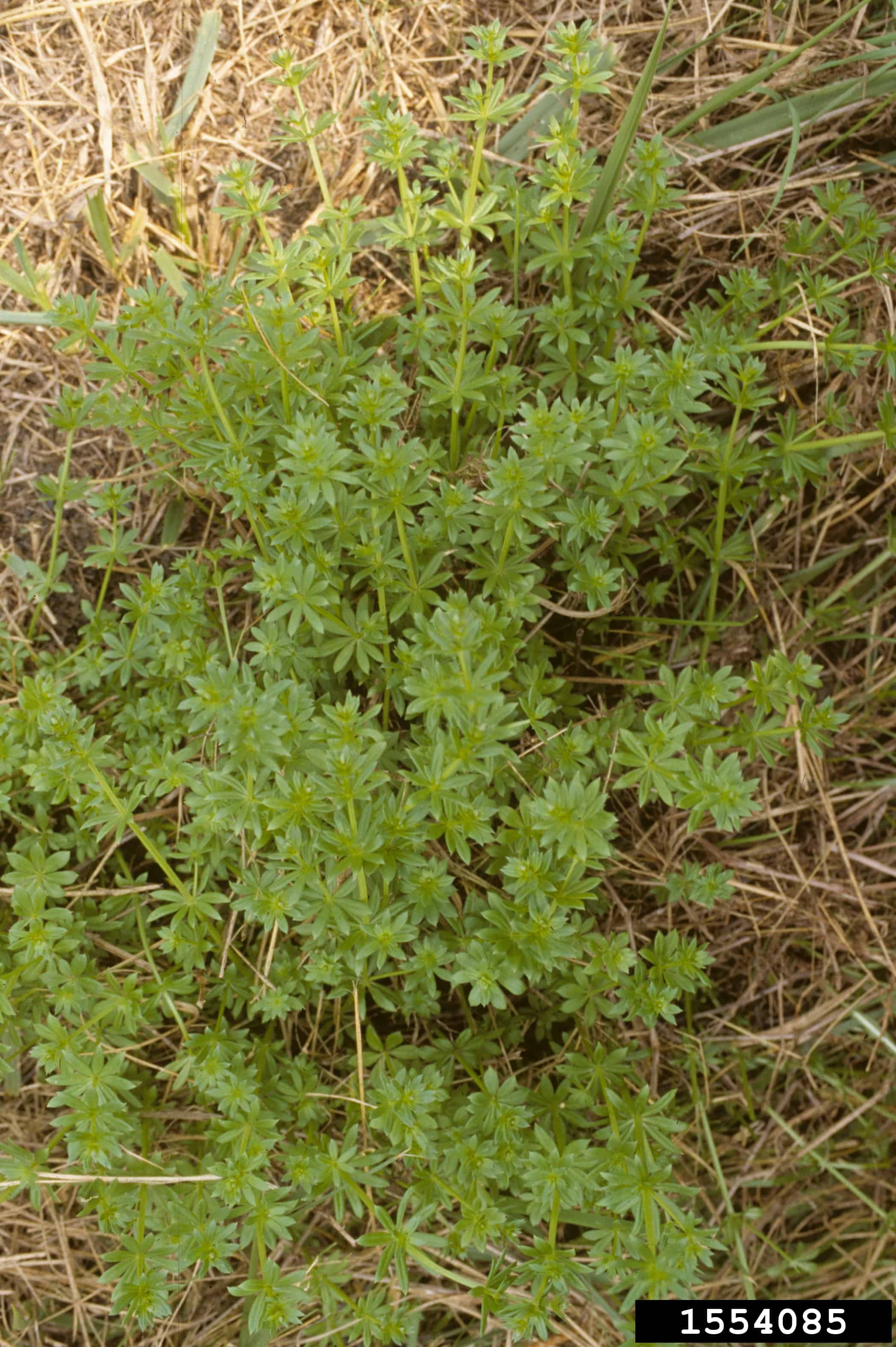
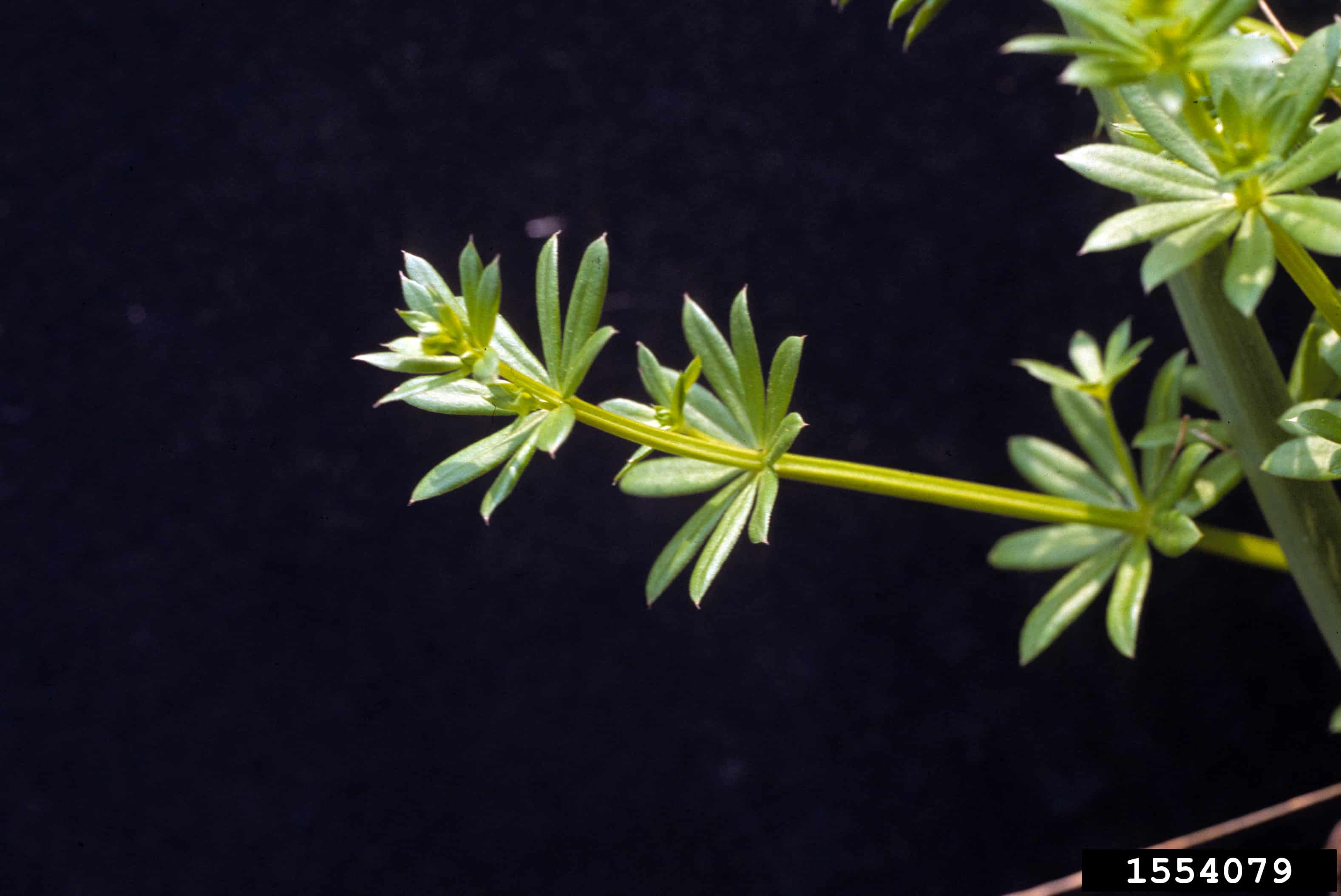
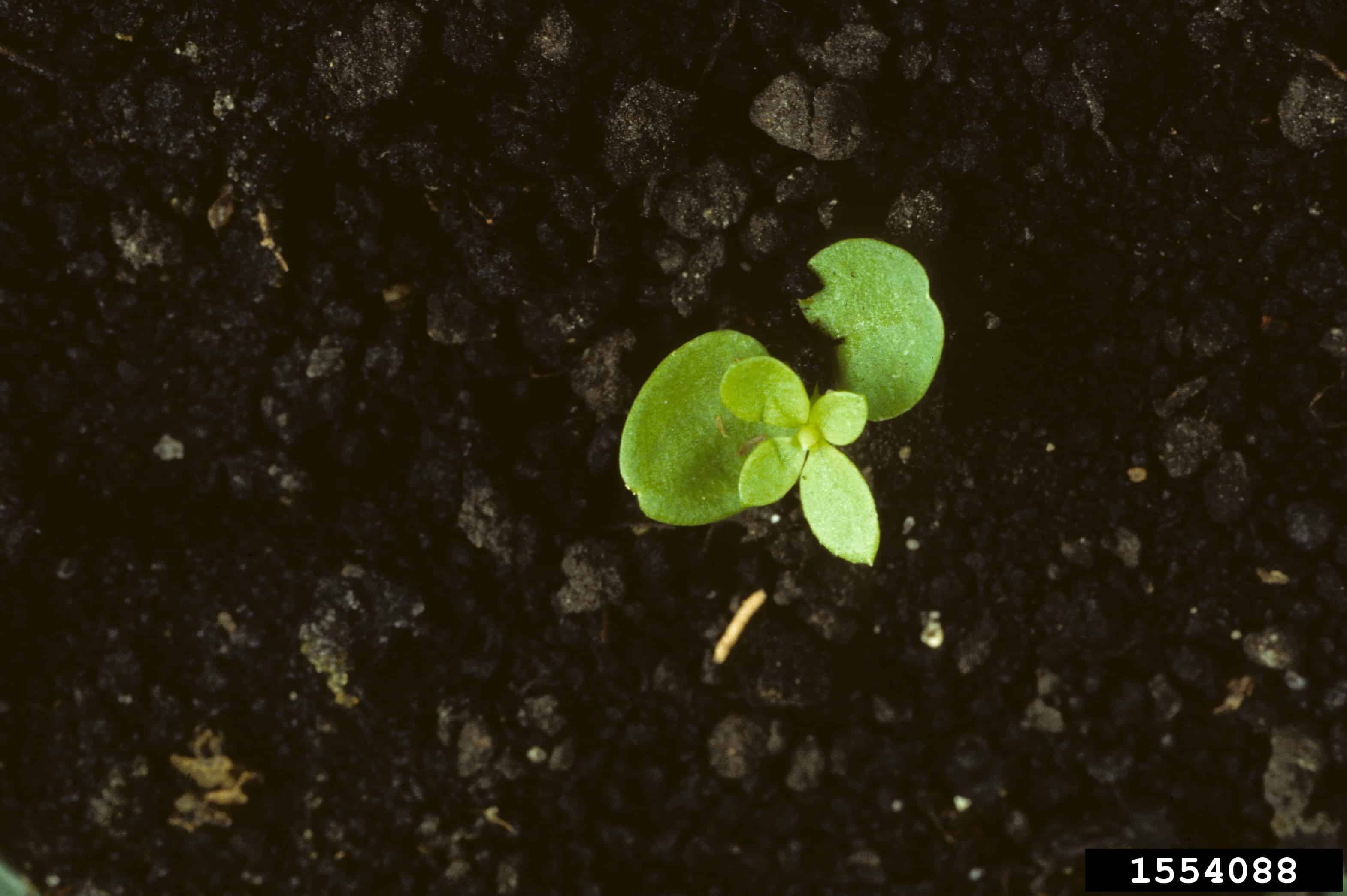
Similar Species
ESPÈCES SEMBLABLES
Similar species are based on a study of seed morphology of various species, and those with similar dispersal units are identified. The study is limited by physical specimen and literature availability at the time of examination, and possibly impacted by the subjectivity of the authors based on their knowledge and experience. Providing similar species information for seed identification is to make users aware of similarities that could possibly result in misidentification.
Galium boreale L. (northern bedstraw )
G. boreale mericarps are a similar size (length*: 1.2 – 1.9 mm; width: 1.0 – 1.3 mm) as G. mollugo, and are covered in flat, white bristles, G. mollugo mericarps are glabrous.
Galium verum L. (yellow bedstraw )
G. verum mericarps are a similar size (length*: 0.9 – 1.8 mm; width: 0.8 – 1.5 mm) as G. mollugo, and are generally a dark brown or black colour. The seed is black coloured compared to reddish-brown seeds of G. mollugo. The mericarps of these two species may be difficult to distinguish.
*Note: minimum and maximum of 10 mericarps in a normal range of this species using image measurement (ISMA 2020)
Click to select species
Cliquez pour sélectionner les espèces
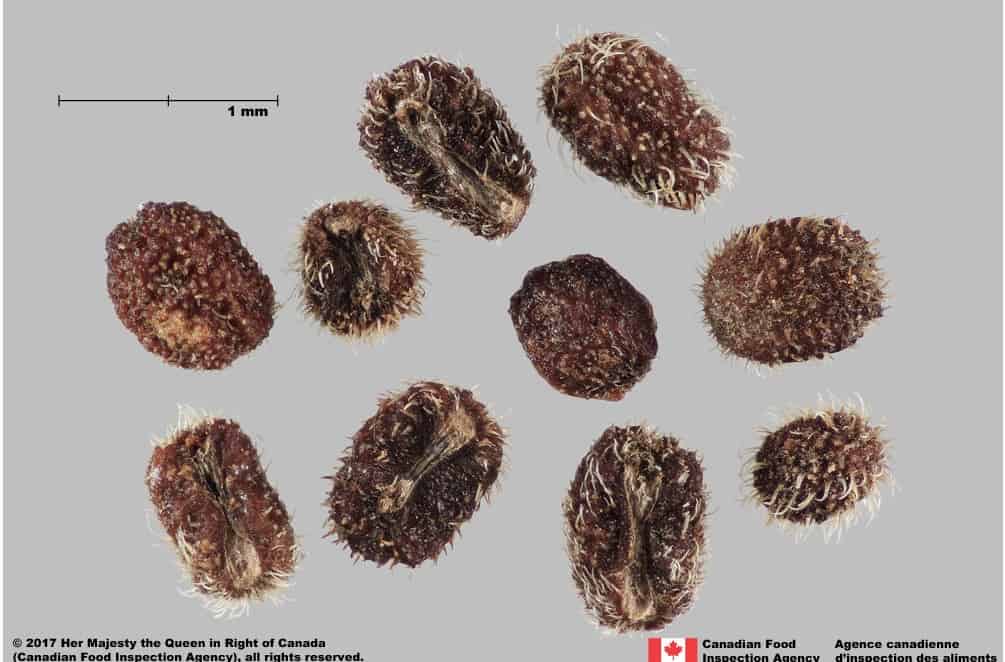
Galium boreale
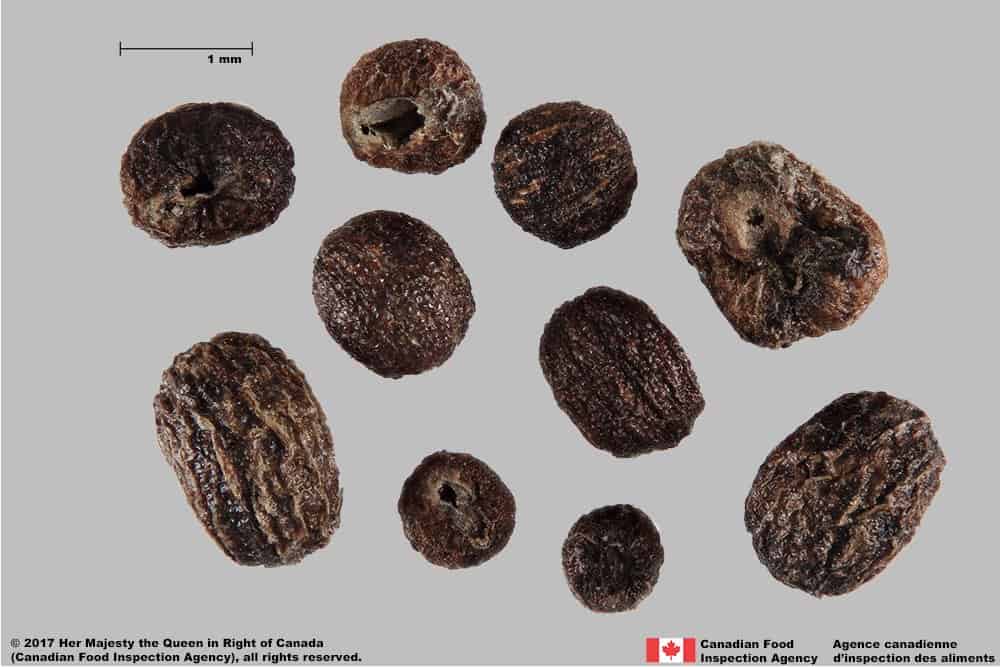
Galium verum
Comparison Window
Fenêtre de comparaison
MAIN SPECIES
ESPÈCES PRINCIPALES
Galium mollugo

Galium mollugo
Rubiaceae
False baby’s breath (Galium mollugo) fruits
MAIN SPECIES
ESPÈCES PRINCIPALES
Galium mollugo

Galium mollugo
Rubiaceae
False baby’s breath (Galium mollugo) fruits
MAIN SPECIES
ESPÈCES PRINCIPALES
Galium mollugo

Galium mollugo
Rubiaceae
False baby’s breath (Galium mollugo) fruit
MAIN SPECIES
ESPÈCES PRINCIPALES
Galium mollugo

Galium mollugo
Rubiaceae
False baby’s breath (Galium mollugo) fruit
SIMILAR SPECIES
ESPÈCES SEMBLABLES
Galium boreale

Galium boreale
Rubiaceae
Northern bedstraw (Galium boreale) fruits
SIMILAR SPECIES
ESPÈCES SEMBLABLES
Galium boreale
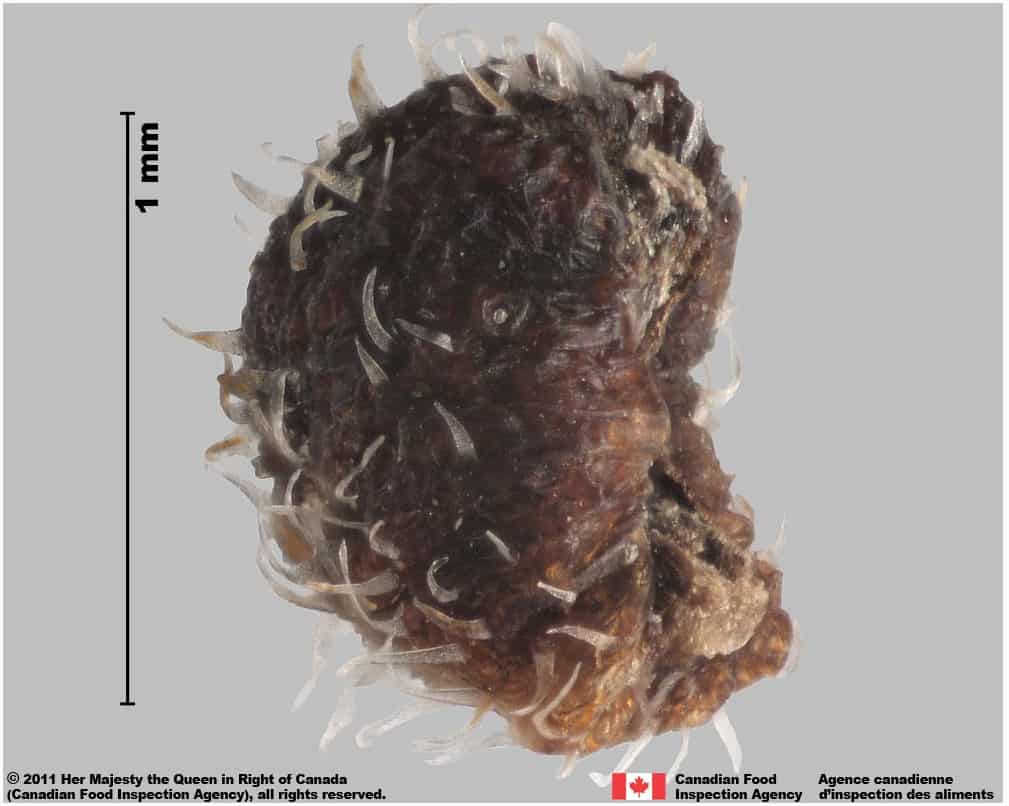
Galium boreale
Rubiaceae
Northern bedstraw (Galium boreale) fruit
SIMILAR SPECIES
ESPÈCES SEMBLABLES
Galium boreale
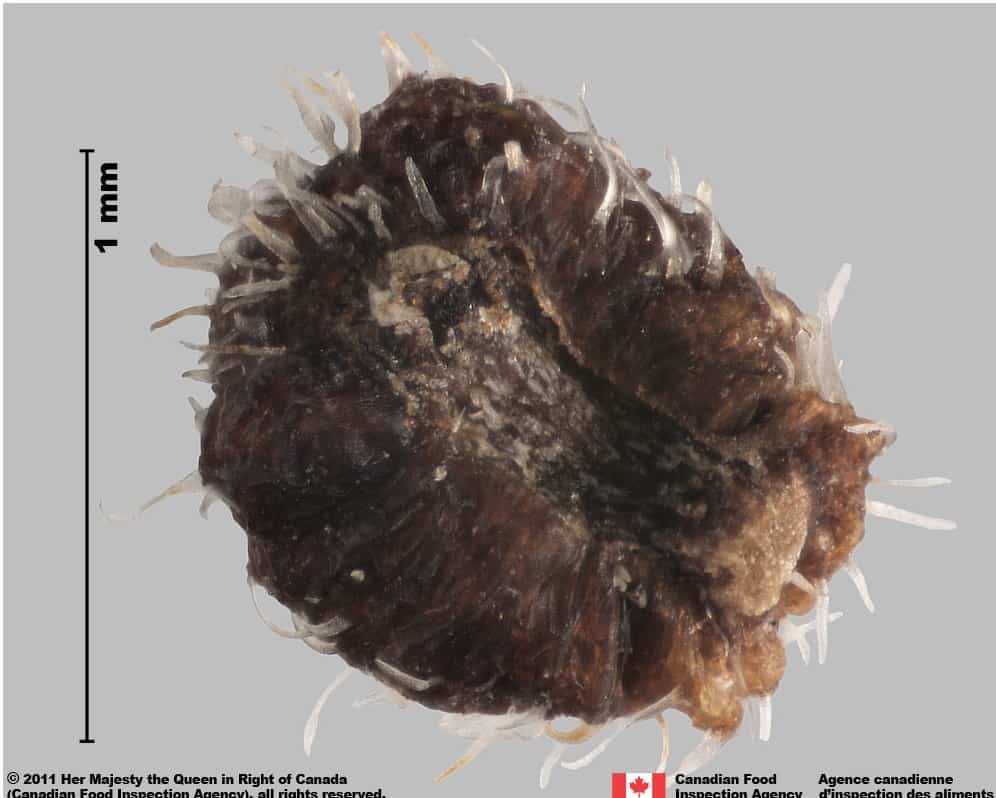
Galium boreale
Rubiaceae
Northern bedstraw (Galium boreale) fruit
SIMILAR SPECIES
ESPÈCES SEMBLABLES
Galium boreale
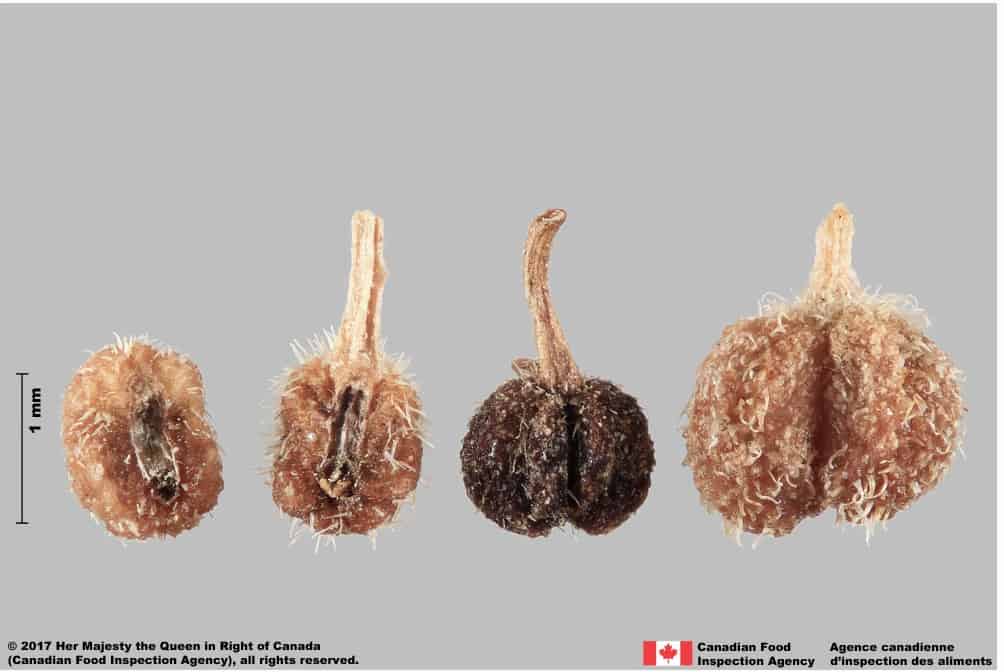
Galium boreale
Rubiaceae
Galium boreale mericarp and 3 schizocarps
Need ID Help?
Besoin d’aide pour l’identification?
Reference(s)
Référence(s)
Brouillet, L., Coursol, F., Meades, S. J., Favreau, M., Anions, M., Bélisle, P. and Desmet, P. 2010+. VASCAN, the database of vascular plants of Canada. http://data.canadensys.net/vascan/ Accessed March 28, 2022.
Darbyshire, S. J. 2003. Inventory of Canadian Agricultural Weeds. Agriculture and Agri-Food Canada, Research Branch. Ottawa, ON. Mersereau, L. D. and DiTommaso, A. 2003. The biology of Canadian weeds. 121. Galium mollugo L. Canadian Journal of Plant Science 83: 453–466.
Global Biodiversity Information Facility (GBIF) Secretariat. 2022. https://doi.org/10.15468/39omei Accessed via https://www.gbif.org/species/9039392 Accessed December 29, 2022
Government of Canada (GC). 2016. Canadian Weed Seeds Order. https://laws-lois.justice.gc.ca/eng/regulations/SOR-2016-93/page-2.html (English) https://laws-lois.justice.gc.ca/fra/reglements/DORS-2016-93/page-2.html (French)
International Seed Morphology Association (ISMA). 2020. Method for Seed Size Measurement. Version 1.0. ISMA Publication Guide. https://www.idseed.org/authors/details/method_for_seed_size_measurement.html
Khalik, K.A , Abd El-Ghani, M. and El Kordy, A. 2008. Fruit and seed morphology in Galium L. (Rubiaceae) and its importance for taxonomic identification. Acta Botanica Croatica, 67: 1-20.
Martin, A.C. 1946. The comparative internal morphology of seeds. The American Midland Naturalist 36: 513-660.
U.S. Department of Agriculture-Agricultural Research Services (USDA-ARS). 2022. Germplasm Resources Information Network (GRIN), https://npgsweb.ars-grin.gov/gringlobal/taxon/taxonomysimple.aspx Accessed March28, 2022.
U.S. Department of Agriculture-Natural Resources Conservation Service (USDA-NRCS). 2022. The PLANTS Database. National Plant Data Team, Greensboro, NC USA. http://plants.usda.gov Accessed March28, 2022.



